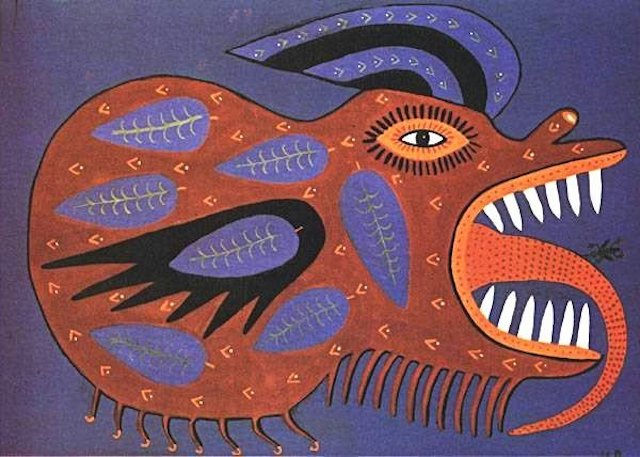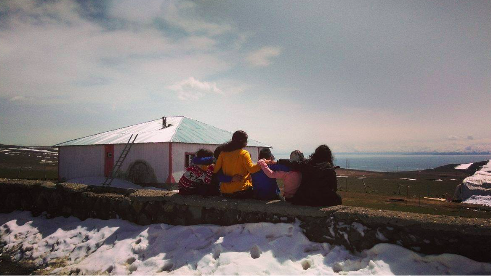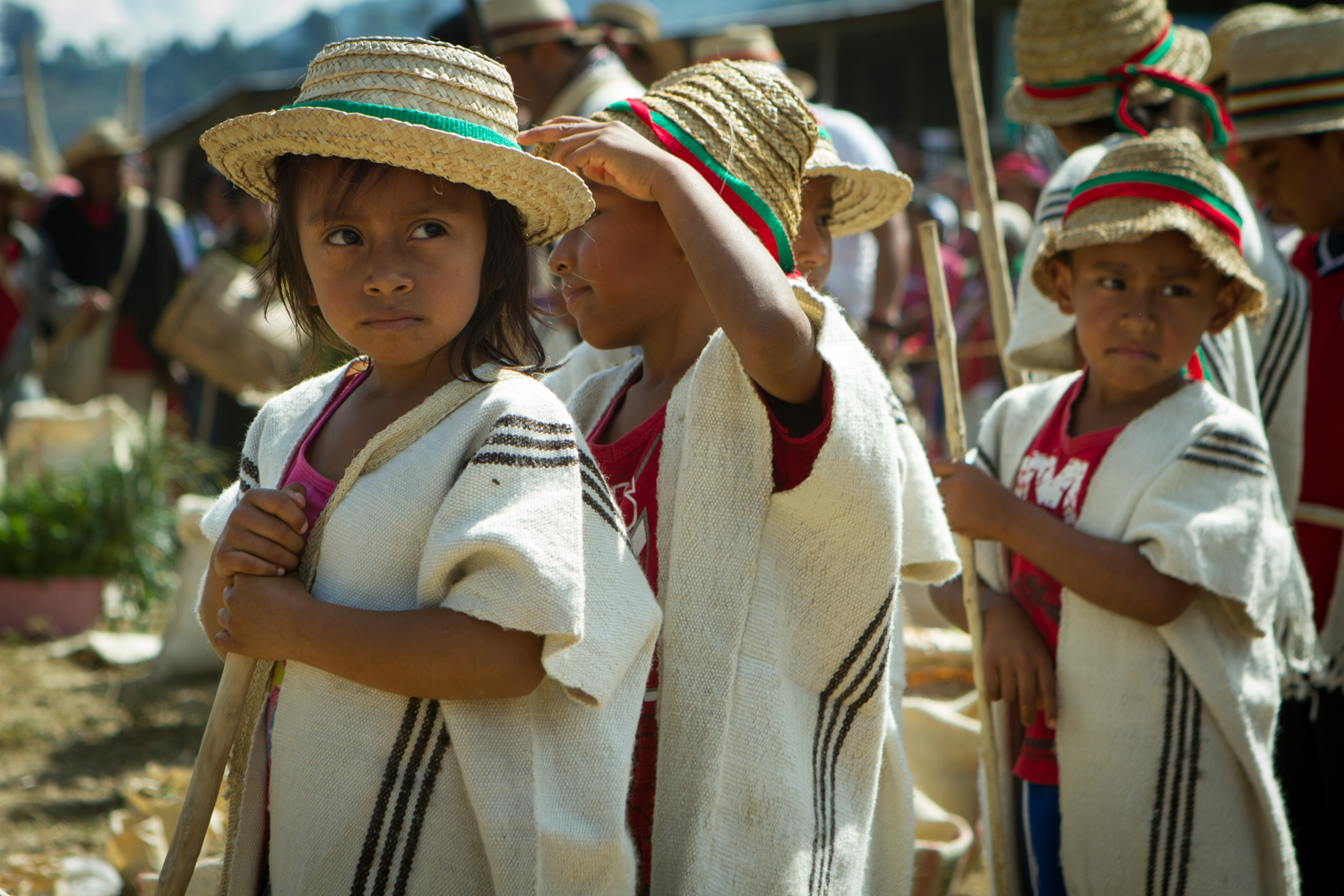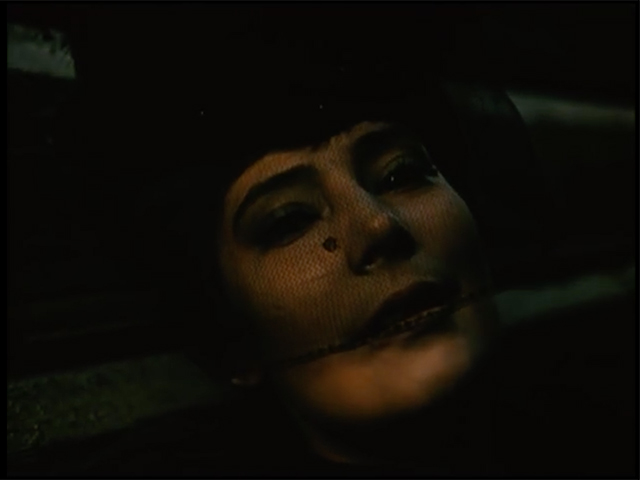In one of the first days of the ongoing invasion of Russia in Ukraine, the Russian troops burnt down the historical museum in Ivankiv, a town near Kyiv. The museum holdings included a collection of early-medieval archeological artifacts, rare Polissia (North Ukrainian and South Belarusian) folk icons, and a collection of 25 works by Maria Prymachenko, an Ivankiv-region-born folk artist who became emblematic for Ukrainian culture. Further, it was confirmed that the works by Prymachenko were saved thanks to the resilience of local people who before the invasion hid the works in their houses. It remains unconfirmed, however, whether all the works were saved and what are their current whereabouts. Her works are typically gouache on paper, so the correct archival preservation is essential due to their fragility.
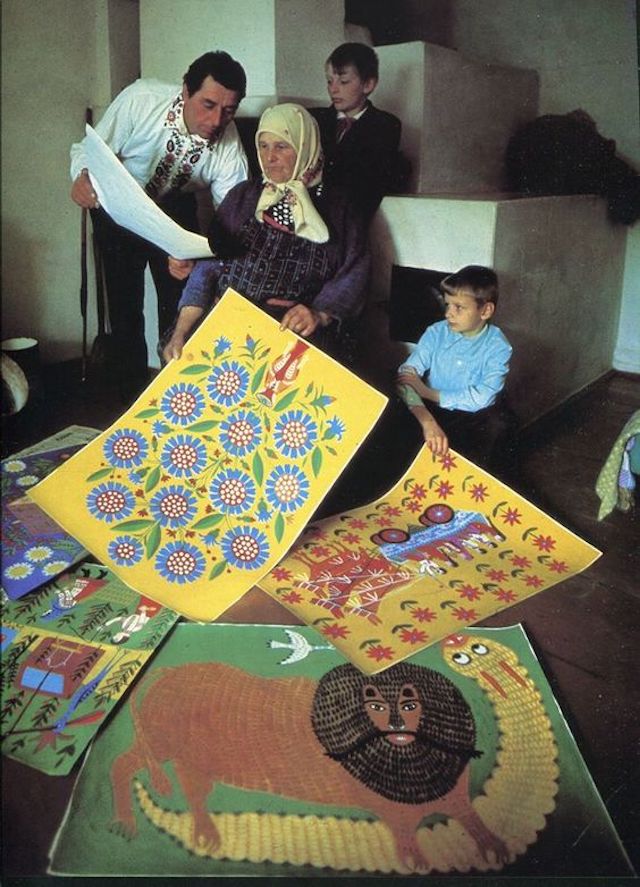
Mari Prymachenko. Courtesy of Mari Prymachenko Family Foundation.
Maria Prymachenko is an artist of key importance for Ukrainian culture. She represents both folk naivety and rootedness in the tradition and the liberation from the conventions that women experienced in rural Ukraine. In-between the hard routine of the Soviet-time village life, she managed to open a window into a variety of new worlds borne by her imagination. Her artistic method was informed with both local folk painting style – before Prymachenko used predominantly in decorative arts – and a particular dialogue with Ukrainian and European early twentieth-century avant-garde.
Importantly, Prymachenko expressed her political and socially engaged views through her art. In her 1978 work May that Nuclear War Be Cursed!, she has no shortage of bright, fluorescent colours to depict a monster of the war with a double snake-like tongue, both threatening and mesmerizing. Another work, The Threat of War (1986) is instead painted in dark, gloomy colours that depict a missile-looking animal with numerous insect legs and again with a long predatory tongue that greedily seeks for its victims.
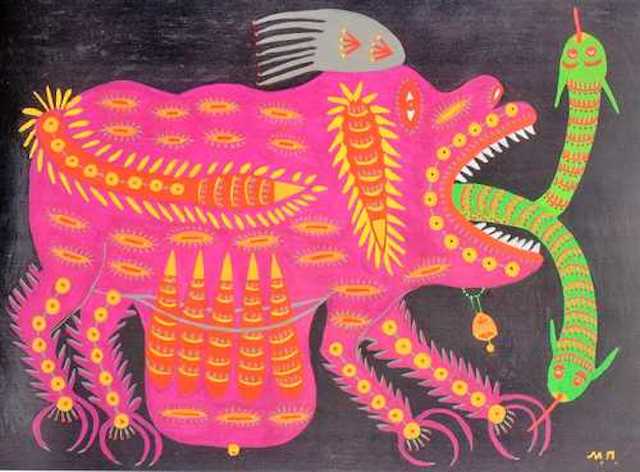
May that Nuclear War Be Cursed!, 1978.
In her other works, the topic of a peaceful sky gains particular importance. Our Army, Our Protectors (1978) depicts a village celebration, with a sun shining over the village, couples dancing as if celebrating victory, and two birds protecting the sky. This is precisely what Ukrainian society while having a powerful and skillful army, lacks in the current situation of the ongoing war – the aviation that would help cover the sky. The painting A Dove Has Spread Her Wings and Asks for Peace (1982) depicts a dove of peace covered with elaborate folk motifs. His protective wings overshadow the soil and protect it, making a homage to Pablo Picasso, who reportedly was fascinated by her works that he saw at the International Exhibition in Paris in 1937.
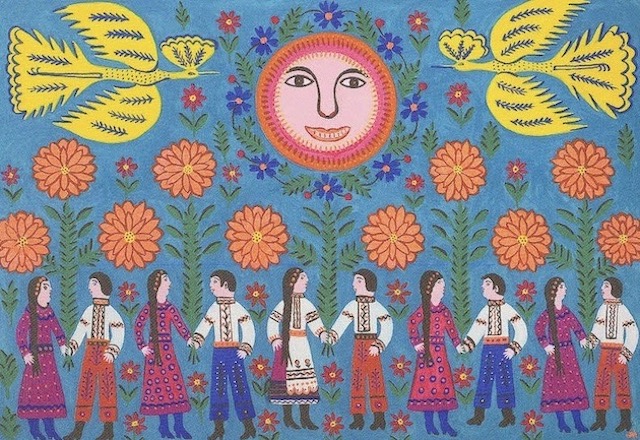
Our Army, Our Protectors, 1978.
Maria Prymachenko’s home village, Bolotnya, together with the district centre, Ivankiv, is now occupied by Russian troops, where many buildings have been shelled and numerous civilian casualties occurred. This situation shows the threat that both cultural heritage and human lives experience in the ongoing war of Russia against Ukraine.
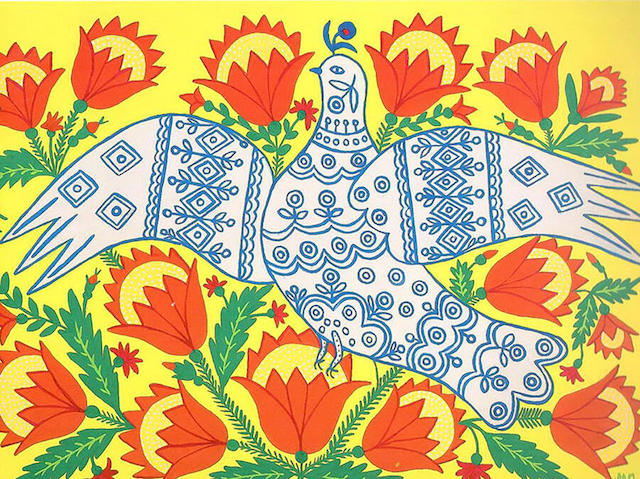
A Dove Has Spread Her Wings and Asks for Peace, 1982.
Another example of threat experienced by cultural objects in Ukraine were the recent concerns about the house of another Ukrainian female artist, Polina Raiko, who worked in folk style in the town of Oleshki in Kherson oblast in the late 1990s. Her museum so treasured by the village community is in fact the house where the artist lived and painted murals on its walls. The naïve depictions of angels, floral ornaments, folk-icon-inspired religious scenes, and fantastic animals cover the walls in an endless painting. There is currently no access to this place and according to military maps, it was in the area heavily shelled by Russians, so several concerns were voiced about the possibility that the house could have been destroyed. The Polina Raiko charity foundation, however, confirmed that the house luckily remained intact, unlike other buildings in the vicinity. However, while the invasion continues, the threat is always present.
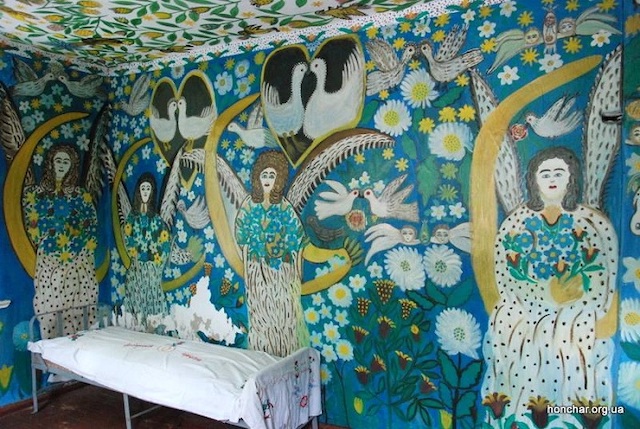
Polina Raiko’s house. Courtesy of the House-Museum of Polina Raiko
As Ukrainian tradition is in danger, the current history proves that the topics touched upon by Ukrainian folk artists, and especially Prymachenko, are still very actual, as they respond to the fears of the epoch. The destruction of the heritage by the Russian army should be condemned by all world heritage protecting organizations, and Russia should be stripped of any affiliations with these organizations, for its deliberate destruction of Ukrainian culture and lives of Ukrainian civilians.
Cover image: Maria Prymachenko, The Threat of War, 1986.

